In figure, k=100N/m,M=1kg and F=10N
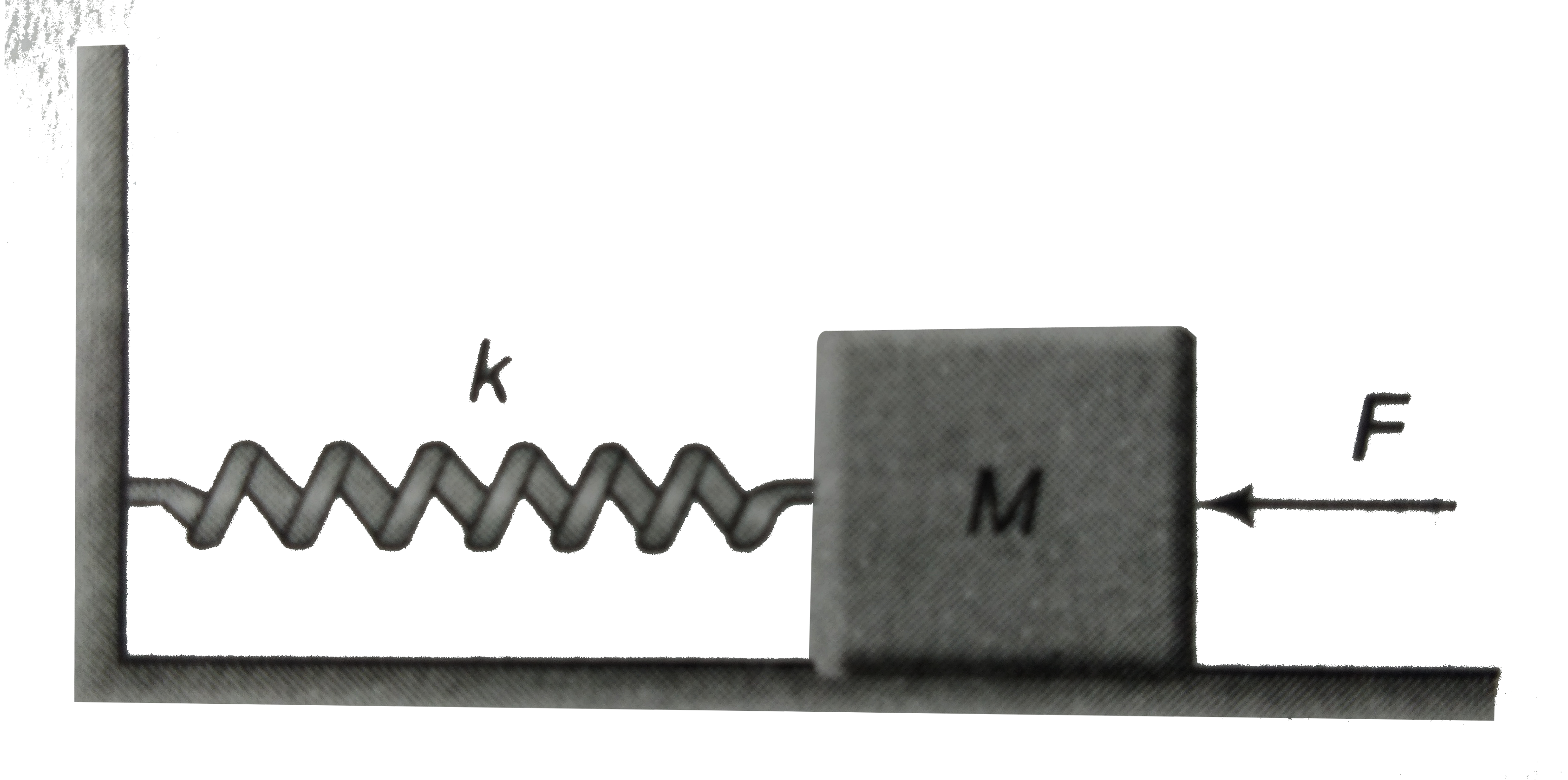
(a) Find the compression of the spring in the equilibrium position
(b) A sharp blow by some external agent imparts a speed of 2m/s to the block towards left. Find the sum of the potential energy of the spring and the kinetic energy of the block at this instant.
(c) Find the time period of the resulting simple harmonic motion.
(d) Find the amplitude.
(e) Write the potential energy of the spring when the block is at the left estreme.
(f) Write the potential energy of the spring when the block is at the right extreme.
The answers of (b), (e) and (f) are different. Explain why this does not violate the principle of conservation of energy ?
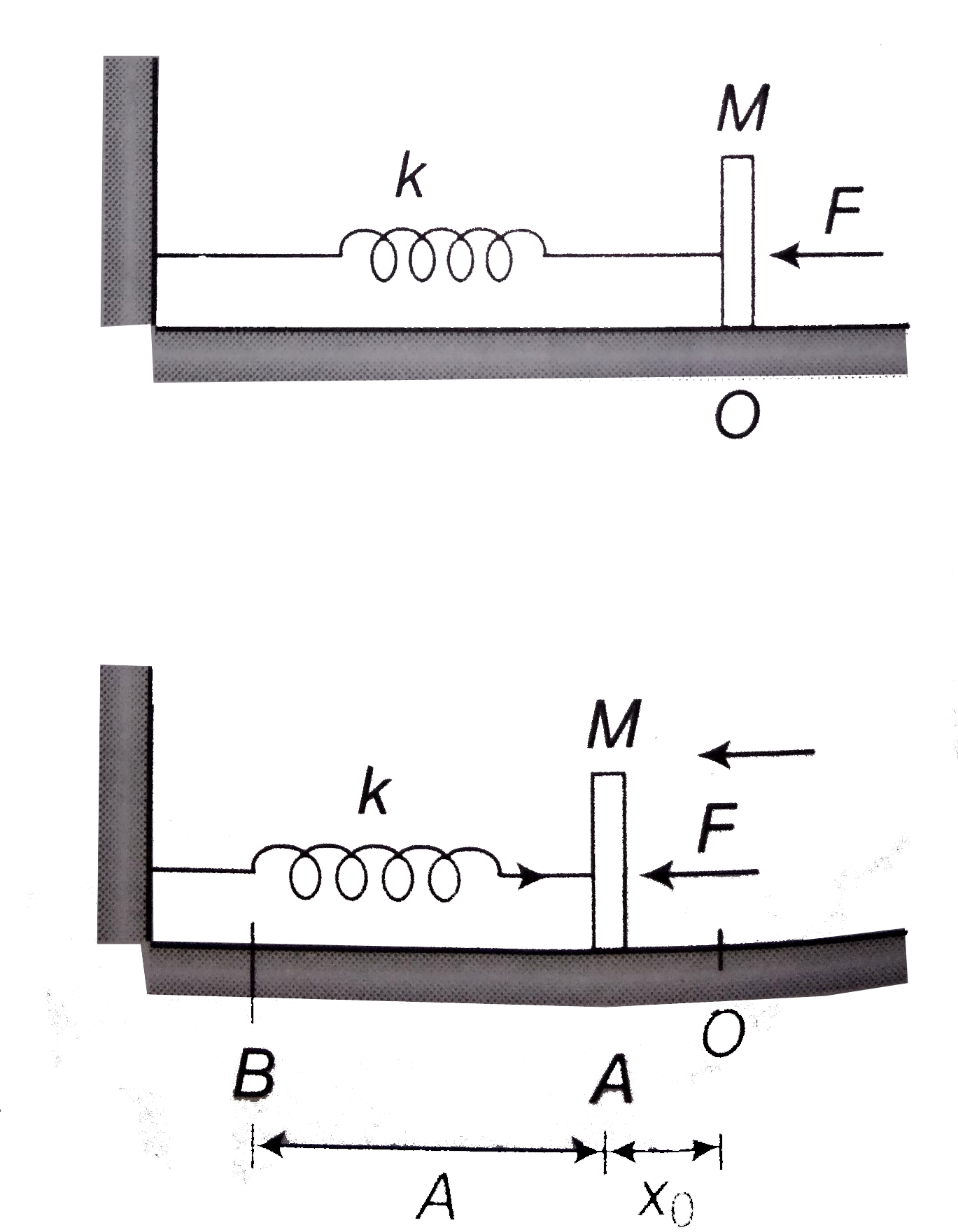
(a) In equilibrium, F=kx0⇒10=100x0⇒x0=0.1m
(b) U+K=12kx20+12Mv2
=12×100(0.1)2+12×1×(2)2=2.5J
(c) T=2π√Mk=2π√1100=2π10=π5s
(d) 2.5+FA=12k(x0+A)2
2.5+10A=12×100(0.1+A)2
=50[A2+2.0A+0.01]
2.5+10A=50A2+10A+0.5
50A2=2⇒A=15m=20cm
(e) P.E. of spring =12k(x0+A)2=12×100(0.1+0.2)2
=50×0.09=4.5J
(f) Spring is extended by 10cm
P.E.=12k(0.1)2=12×100×0.1=0.5J
Topper's Solved these Questions
Similar Questions
In figue k=100Nm−1M=1kgandF=10N. a. Find the compression of the spring in the equilibrium position. b. A sharp blow by some xternal agent imparts a speed of 2ms−1 to the block towards left. Find the sum of the potential energy of the spring and the kinetic energy of the block at ths instant. c. find the time period of the resulting simple harmonic motion. d. Find the ampitude. e. Write the potential energy of the spring when the block is at the left extreme. f. Write teh potential energy of the spring when teh block is at the right extreme.
The anwer of b, e, and f are different. Explain why this does not violate the principle of conservation of energy.
 View Solution
View SolutionThe spring shown in figure is unstretched when a man starts pulling on the cord. The mass of the block is M. If the man exerts a constant force F, find
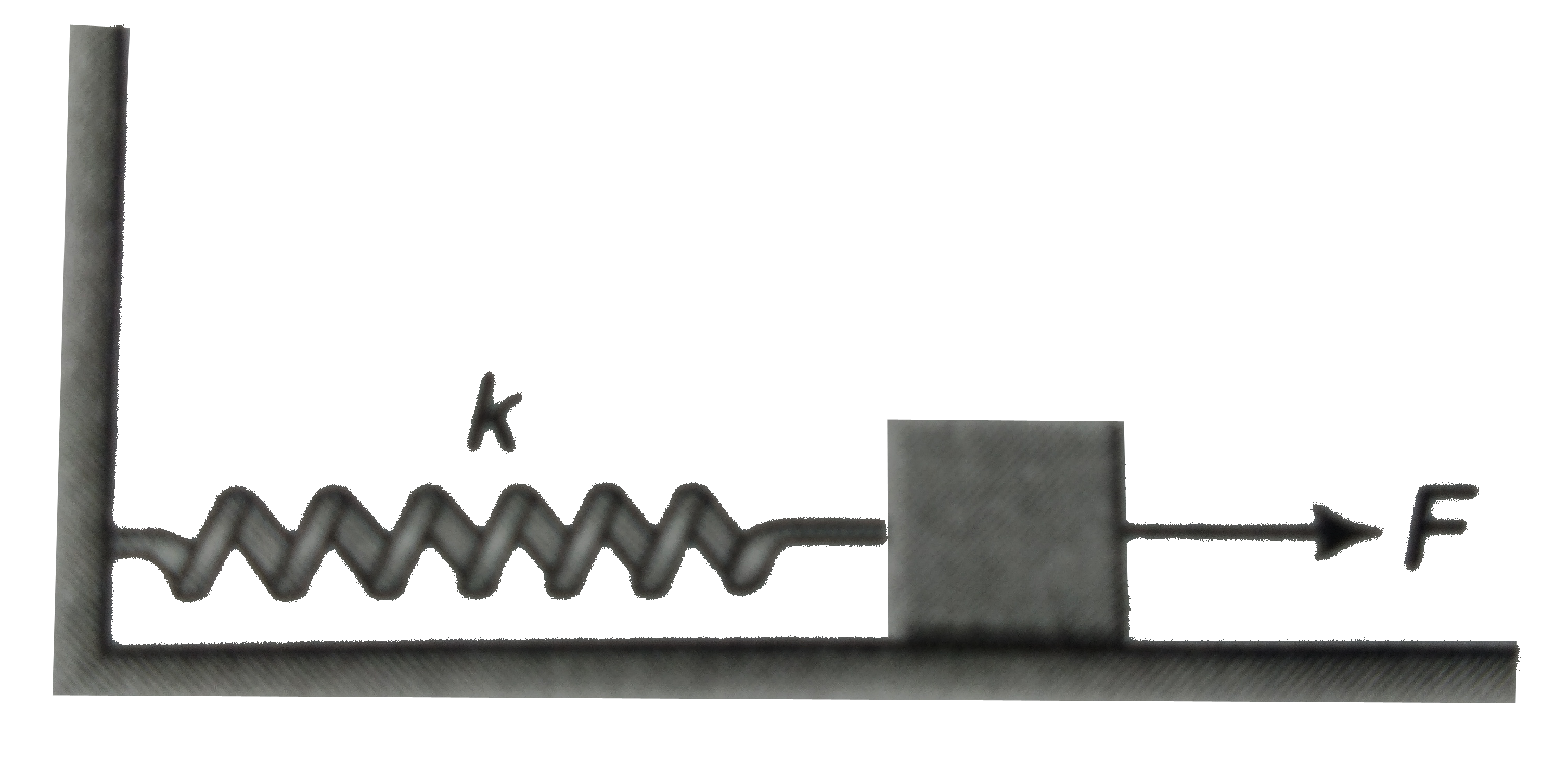
(a) the amplitude and the time period of the motion of the block,
(b) the energy stored in the spring when the block passes through the equilibrium position and
(c) the kinetic energy of the block at this position.View Solution
Knowledge Check
- Question 1 - Select One
Concrete blocks of masses mA and mB are balanced on two identical vertical springs mA=2mB . The gravitational potential energy of each system is zero at the equilibrium position of the springs. Which statements is true for the total mechanical energy of the systems when the blocks are balanced on the springs?
AEA=EBBEA=2EBCEA=4EBDEA=−2EB - Question 2 - Select One
A block of mass m is initially moving to the right on a horizontal frictionless surface at a speed v. It then compresses a spring of spring constant k. At the instant when the kinetic energy of the block is equal to the potential energy of the spring, the spring is compressed a distance of :
Av√m/2kBv√m/kCv√m/4kDmv2/4k - Question 3 - Select One
Concerete block of mass mAandmB. The gravitutional potential energy of each system is zero at the equilibrium position of the springs. Which ststement is true for the total machanical energy of the springs. Which system when the block , are balanced on the springs?
AEA=EBBEA=2EBCEA=4EBDEA=−2EB
A block of mass m held touching the upper end of a light spring of force constant K as shown in figure. Find the maximum potential energy stored in the spring if the block is released suddenly on the spring.
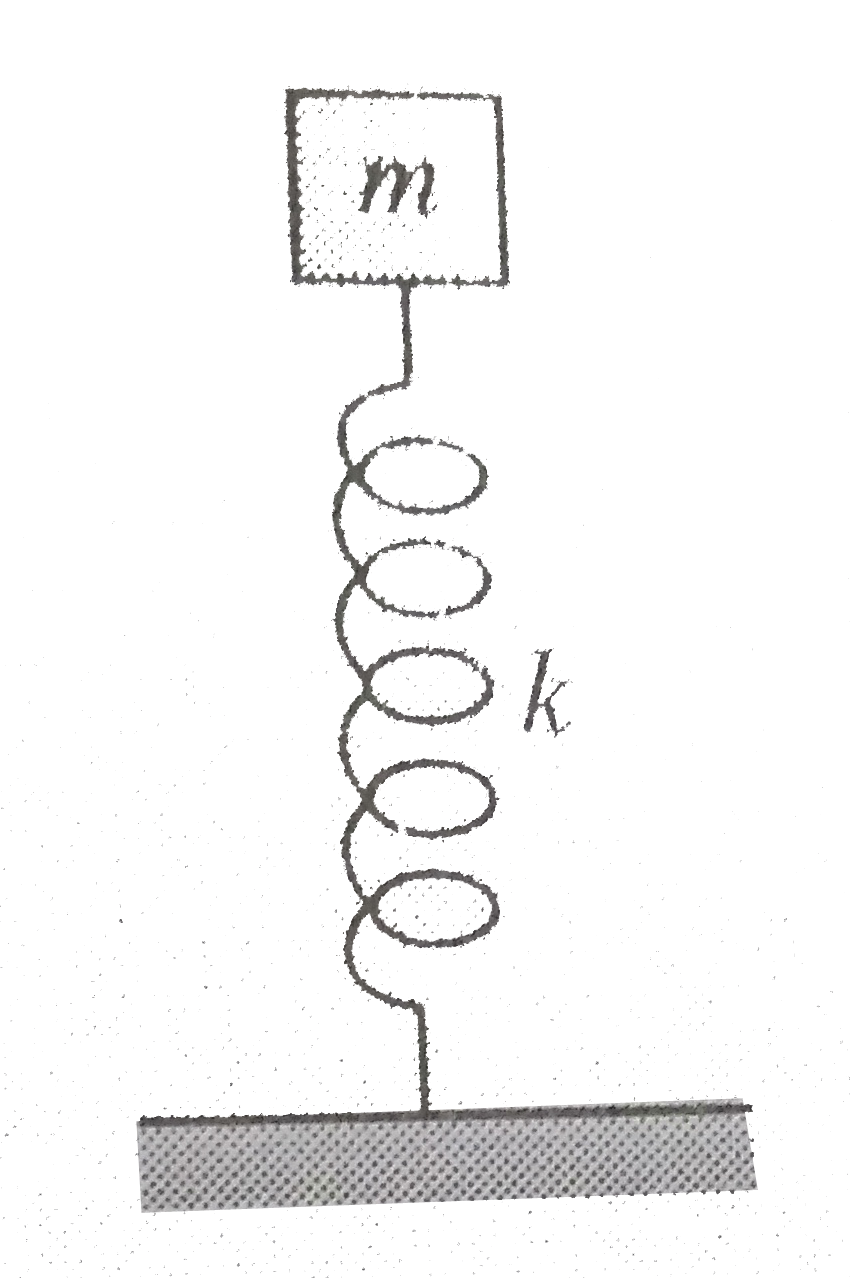 View Solution
View SolutionEach of the blocks shown in figure has mass 1 kg. The rear block moves with a speed of 2 m/s towards the front block kept at rest. The spring attached to the front block islight and has a spring constant 50 N/m. find the maximum compression of the spring.
 View Solution
View SolutionThe block shown in figure is released from rest. Find out the speed of the block when the spring is compressed by 1 m
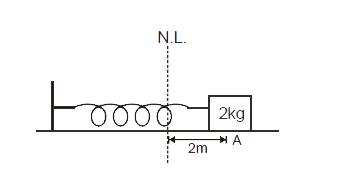 View Solution
View SolutionA block of mass 2 kg is connect to an ideal spring and the system is placed on a smooth horizontal surface. The spring is pulled to move the block and at an instant the speed of end A of the spring and speed of the block were measured to be 6 m/s and 3 m/s respectively. At this moment the potential energy stored in the spring is increasing at a rate of 15 J/s. Find the acceleration of the block at this instant.
 View Solution
View SolutionA force of 10 N holds an ideal spring with a 20Nm spring constant in compression. The potential energy stored in the spring is
View Solution

